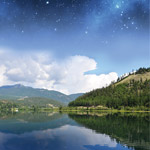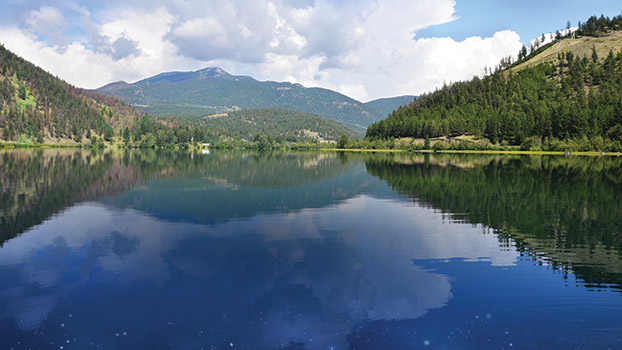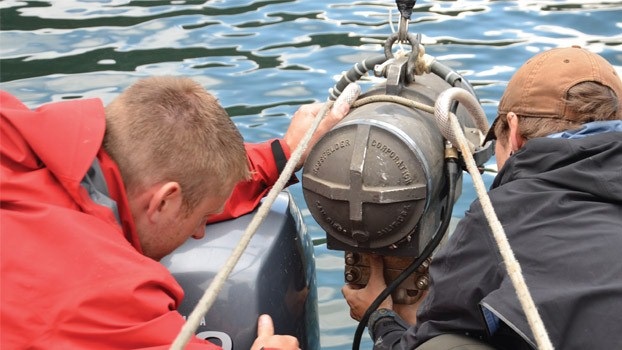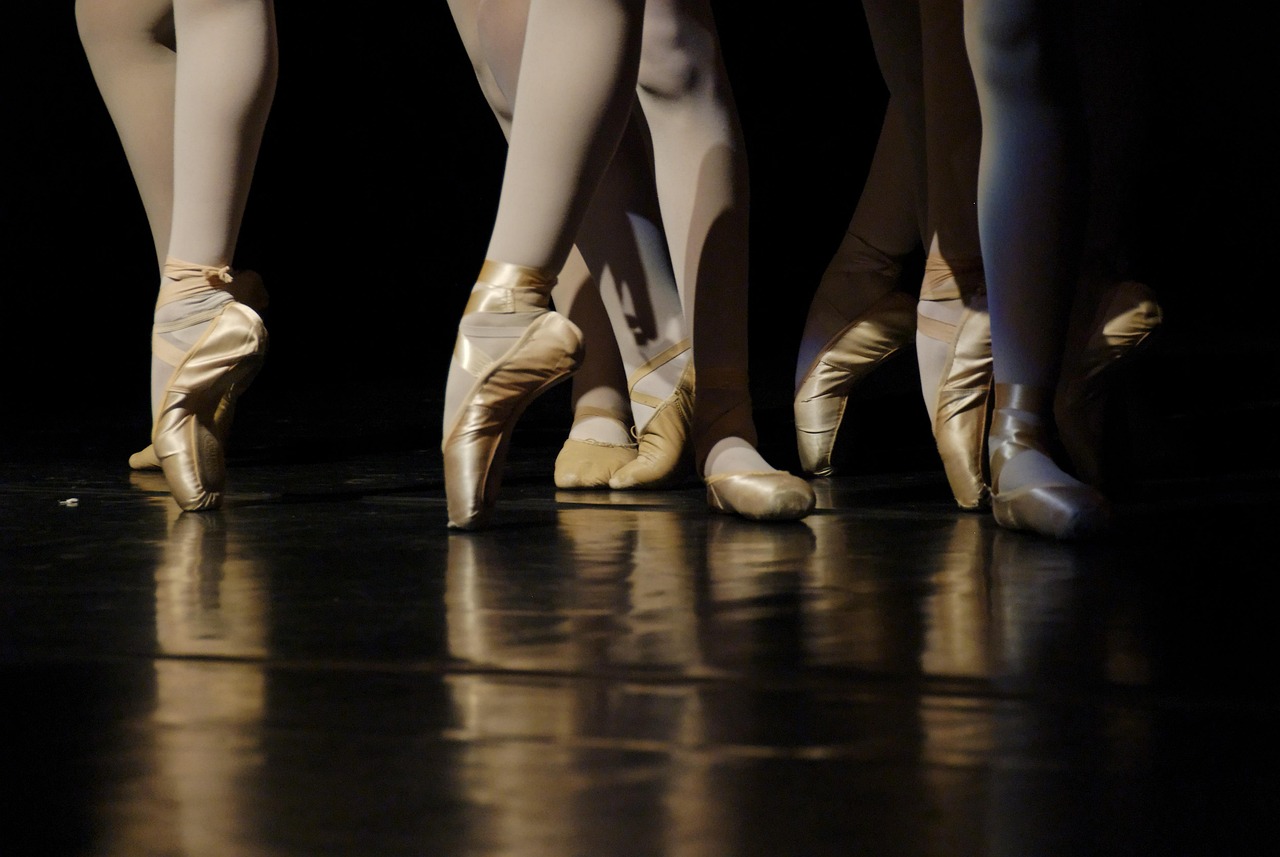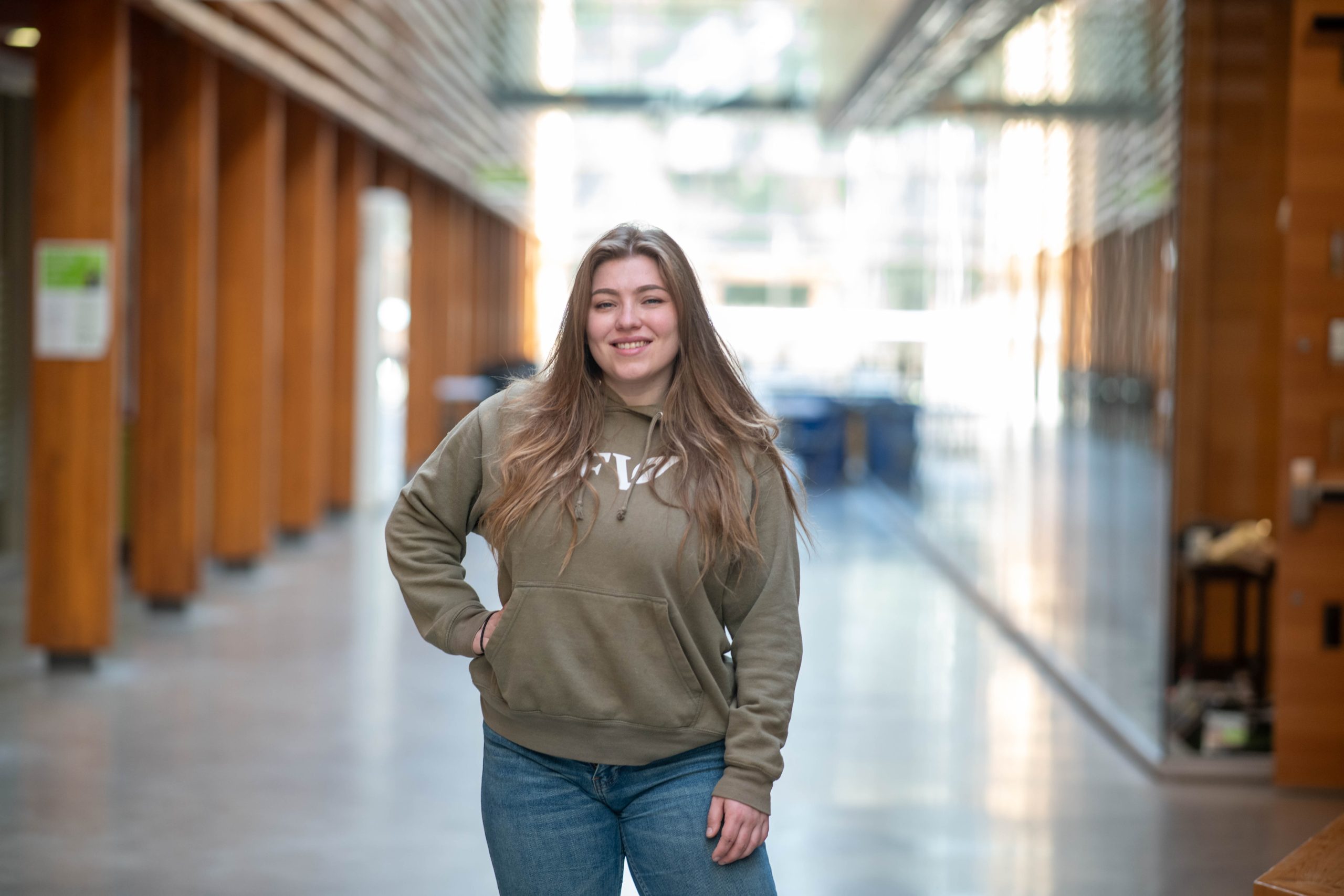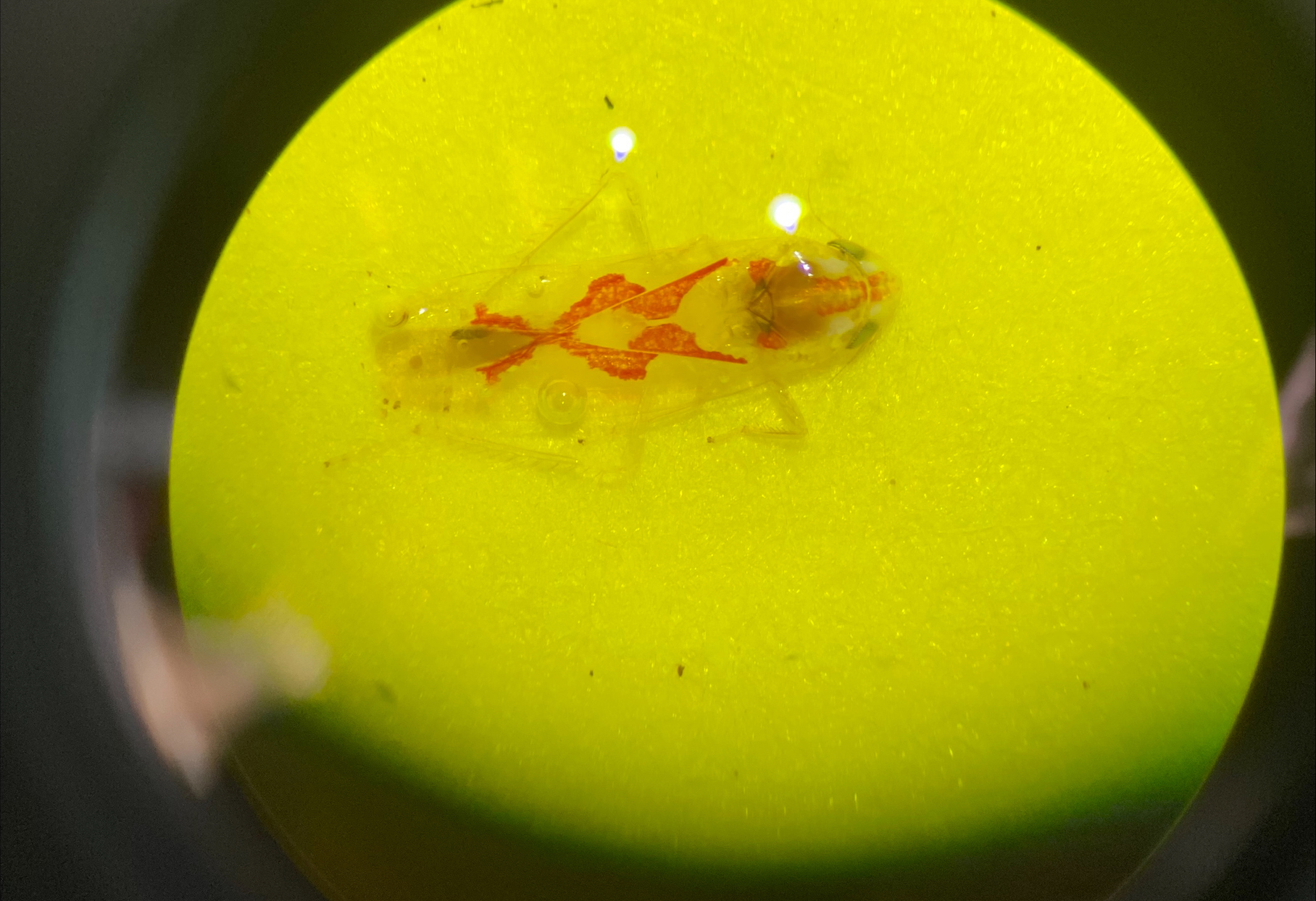UFV + NASA. Looking for signs of life.
UFV researchers are helping NASA understand the environment of odd life forms. Investigating the universe from the bottom of an ancient lake, right here in BC.
Working with NASA (National Aeronautics and Space Administration) is a dream for most scientists. And it’s something a group of UFV students were able to experience during a summer research trip to south central B.C. last summer.
The group spent two days at Kelly Lake (near Clinton) in July 2012, collecting data to learn more about the lake’s history. The lake is of interest to NASA as it contains unique rock formations called microbialites, which are considered to be rare carbonate rock structures formed by microorganisms.
The four students associated with UFV were joined by Dr. Olav Lian, a UFV geography instructor and 2012 winner of UFV’s inaugural research excellence award, and two students linked with NASA’s Ames Research Centre. With the help of University of Northern British Columbia geography instructor Brian Menounos and his graduate student, the group used a boat and special equipment to carry out their research.
The expedition’s purpose was to core the lake’s bottom to collect sediment that has accumulated over time.
NASA’s Darlene Lim explained the coring process as similar to putting a straw in a glass of cola, capping the top, and then bringing the straw upwards.

“The cola that’s trapped in the straw is essentially your sample,” she said, adding that in the lake’s case, the sample at the bottom is the oldest, and the top is the youngest.
“So to understand the history of this aquatic system, you can tap into that sediment as a record, or historical book, of what’s happened to this environment over long periods of time,” said Lim. “That’s essentially what we’re interested in — that history of accumulation, and what’s happened surrounding the lake, and also within the lake, over long periods.”
While NASA has been working in the Kelly Lake area since 2004 with the Pavilion Lake Research Project, learning more about the microbialites, Lian has been conducting geology research in the area for nearly 20 years.
The collaboration is important to NASA in determining the region’s history, which they believe will assist them in understanding more about the formations, such as how they’re created and why they are here.
NASA and UFV connected on the project thanks to the long-time research done by Lian. He had spent a lot of time in the area as was in be the heart of his former PhD field study area, which analyzed the environments that surrounds Kelly Lake.
Lian was in the area when NASA was doing an open house in Clinton in 2011. After connecting with the NASA team, Lian was invited to give a talk at NASA Ames Research Centre in California.
Lian also introduced Lim to Dr. Menounous, a physical geography professor at UNBC who is an expert in extracting sediment cores from deep lakes. As a group, they decided to spend a couple of days at Kelly Lake last summer in an attempt to core the lake bottom.
“Dr. Lim’s interest in this is gaining a better understanding of the environment in which the microbialites have lived,” said Lian “Lake-bottom sediments are an archive for long-term environmental change; this is my interest as well, but I am also interested is in knowing how long the lake basin has been there. If we can date when sedimentation started, then we have a limiting date on the age of the lake basin. The lake will be cored using boat-mounted equipment, which is owned by UNBC.”
Another key aspect in the collaboration is involving the students.
“We always try to bring as many students with us as we can,” said Lian. “We’re not the type of scientists that like to work in isolation — mentorship of students is incredibly important to us.”
“Students are extremely important to any field team and research group,” added Lim. “Otherwise things just stagnate, and don’t move on and get published, so we totally believe in bringing students in all cases.”
The students who participated from UFV included physics student Brie Mackovoc, who works with Lian in the 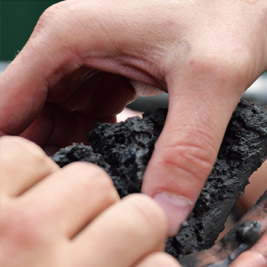 luminescence dating lab. UFV geography graduates Winter Moon and Justine Cullen, who are working under Lian’s supervision while completing their master’s degrees at Simon Fraser, also attended.
luminescence dating lab. UFV geography graduates Winter Moon and Justine Cullen, who are working under Lian’s supervision while completing their master’s degrees at Simon Fraser, also attended.
Daniel Huesken was another one of the students on the trip. Working in UFV Geography’s Luminescence Dating Lab for the summer, he was grateful for the opportunity to work with other students and gain field experience, all without having to be a graduate student.
“It’s pretty exciting to get out in the field and collect data, because you learn so much about it in the classroom,” said Huesken. “To get out here and get your hands dirty, playing with the dirt and sediments, it’s pretty fun. I feel super fortunate that UFV has a really great commitment to undergrad research. So it’s been a great experience.”
In 2014, UFV turns 40. As we celebrate our history, we also dream of growing innovation locally and beyond. We can only do this together with you.
Read more stories from Local + Beyond.
Visit ufv.ca/40


